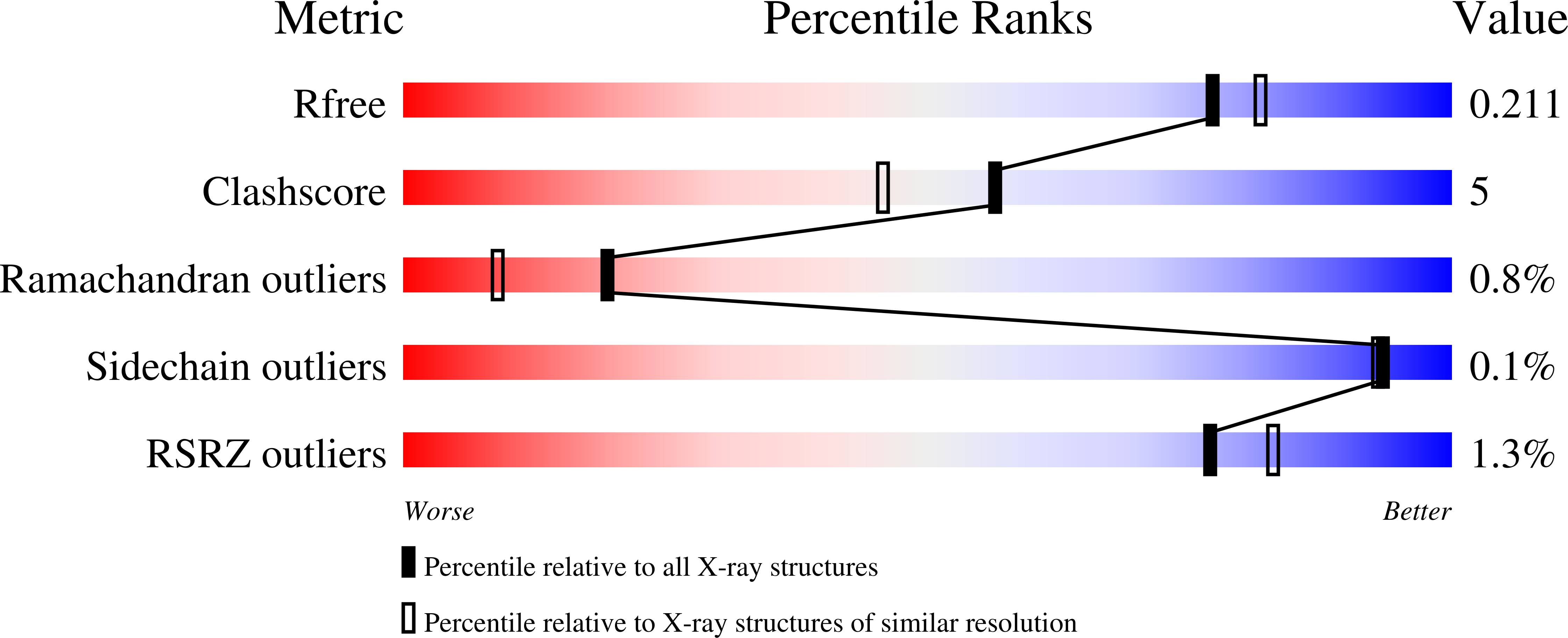Structural and Kinetic Analyses Reveal the Dual Inhibition Modes of Ornithine Aminotransferase by (1 S ,3 S )-3-Amino-4-(hexafluoropropan-2-ylidenyl)-cyclopentane-1-carboxylic Acid (BCF 3 ).
Butrin, A., Beaupre, B.A., Kadamandla, N., Zhao, P., Shen, S., Silverman, R.B., Moran, G.R., Liu, D.(2021) ACS Chem Biol 16: 67-75
- PubMed: 33316155
- DOI: https://doi.org/10.1021/acschembio.0c00728
- Primary Citation of Related Structures:
7JX9 - PubMed Abstract:
Hepatocellular carcinoma (HCC) is the most common form of liver cancer and the leading cause of death among people with cirrhosis. HCC is typically diagnosed in advanced stages when tumors are resistant to both radio- and chemotherapy. Human ornithine aminotransferase ( h OAT) is a pyridoxal-5'-phosphate (PLP)-dependent enzyme involved in glutamine and proline metabolism. Because h OAT is overexpressed in HCC cells and a contributing factor for the uncontrolled cellular division that propagates malignant tumors (Ueno et al. J. Hepatol. 2014, 61, 1080-1087), it is a potential drug target for the treatment of HCC. (1 S ,3 S )-3-Amino-4-(hexafluoropropan-2-ylidenyl)-cyclopentane-1-carboxylic acid (BCF 3 ) has been shown in animal models to slow the progression of HCC by acting as a selective and potent mechanism-based inactivator of OAT (Zigmond et al. ACS Med. Chem. Lett. 2015, 6, 840-844). Previous studies have shown that the BCF 3 - h OAT reaction has a bifurcation in which only 8% of the inhibitor inactivates the enzyme while the remaining 92% ultimately acts as a substrate and undergoes hydrolysis to regenerate the active PLP form of the enzyme. In this manuscript, the rate-limiting step of the inactivation mechanism was determined by stopped-flow spectrophotometry and time-dependent 19 F NMR experiments to be the decay of a long-lived external aldimine species. A crystal structure of this transient complex revealed both the structural basis for fractional irreversible inhibition and the principal mode of inhibition of h OAT by BCF 3 , which is to trap the enzyme in this transient but quasi-stable external aldimine form.
Organizational Affiliation:
Department of Chemistry and Biochemistry, Loyola University Chicago, 1068 W Sheridan Rd, Chicago, Illinois 60660, United States.
















